7 Plants You Had No Idea Could Kill You
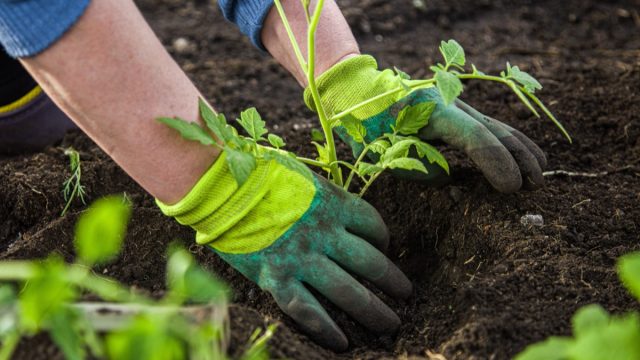
Whether you’re planting a garden in your backyard or adding a few potted plants to your living room, a little greenery can liven up any space in a flash. However, those aesthetically pleasing additions to your home or outdoor space may not always be as safe as you’d hope. In fact, experts say that many popular plants are poisonous to humans and animals and can cause serious health issues—or even death—if not handled appropriately. Before you put yourself or your loved ones in harm’s way, read on to discover which popular plants could kill you, according to experts.
RELATED: Never Bring These Plants Into Your Home If You Have Pets.
1
Water hemlock
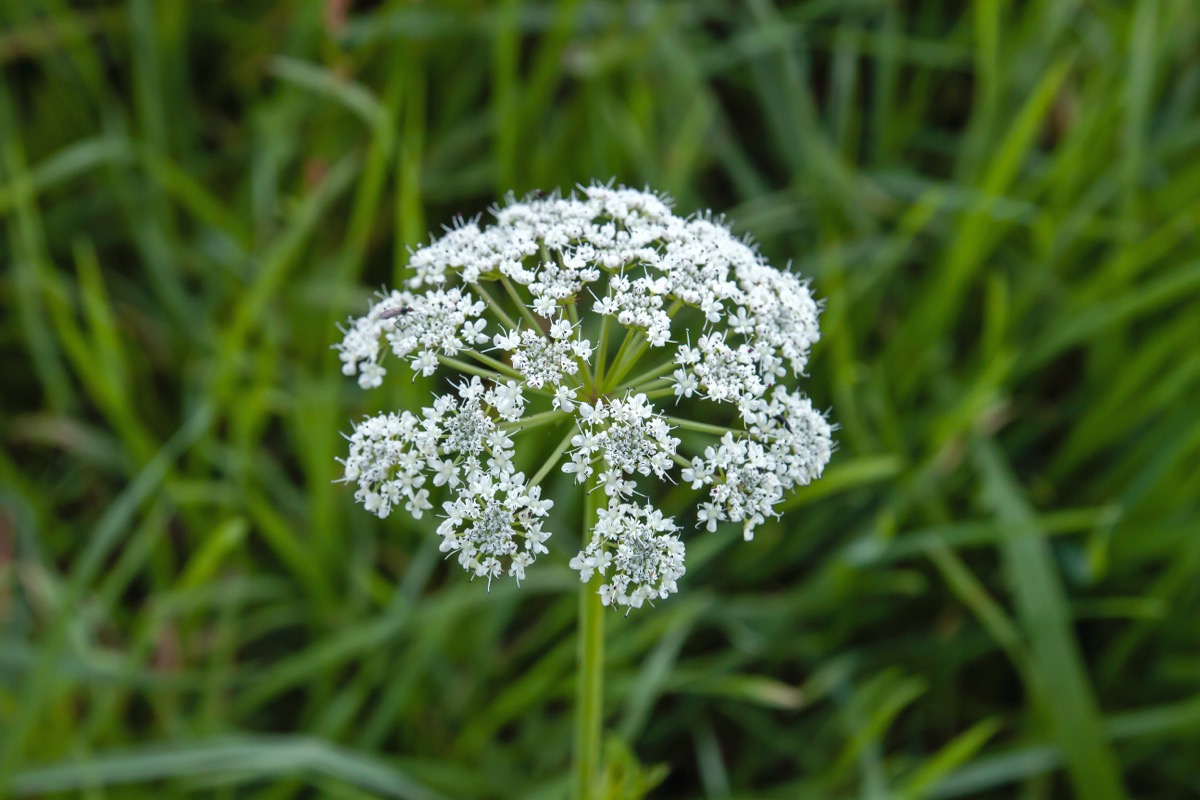
It may look lovely, with blooms resembling those of Queen Anne’s Lace, but water hemlock is not only invasive—it’s poisonous, too.
“While they’re unlikely to ever be grown purposely on any property, their invasive nature as a common weed means they may occasionally find their way into your garden or local area. The toxins contained in the plant affect the central nervous system, which can cause death by asphyxia in humans and animals,” explains horticulturist Thomas O’Rourke, a gardener with Horticulture Magazine.
O’Rourke says that if you happen to notice water hemlock on your property, seeking advice from a professional is the best course of action to avoid illness or injury.
For the latest safety news delivered straight to your inbox, sign up for our daily newsletter.
2
Oleander
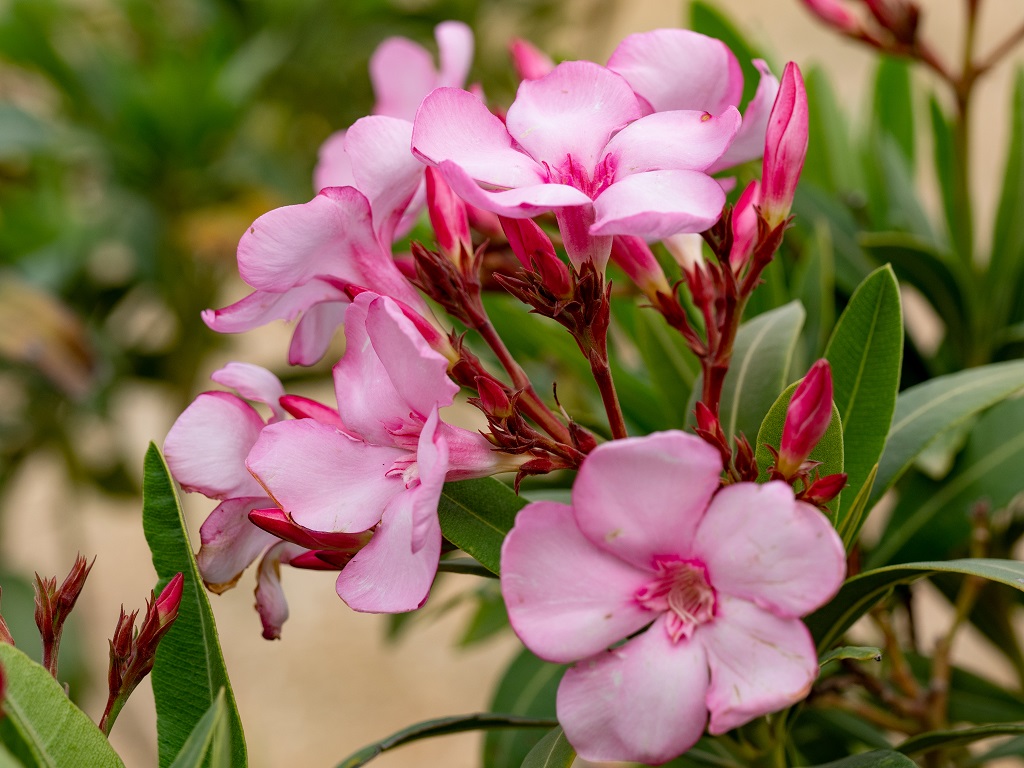
Don’t let its pretty pink flowers fool you: oleander is highly toxic.
“Ingestion of the plant can be fatal for both humans and animals. While there have been very few reports of human fatalities caused by oleander, the plant has been known as the cause of accidental poisoning in many parts of the world, especially for animals such as horses, dogs and cattle,” explains O’Rourke. He says that it should never be grown on properties with children or pets.
3
Lily of the valley
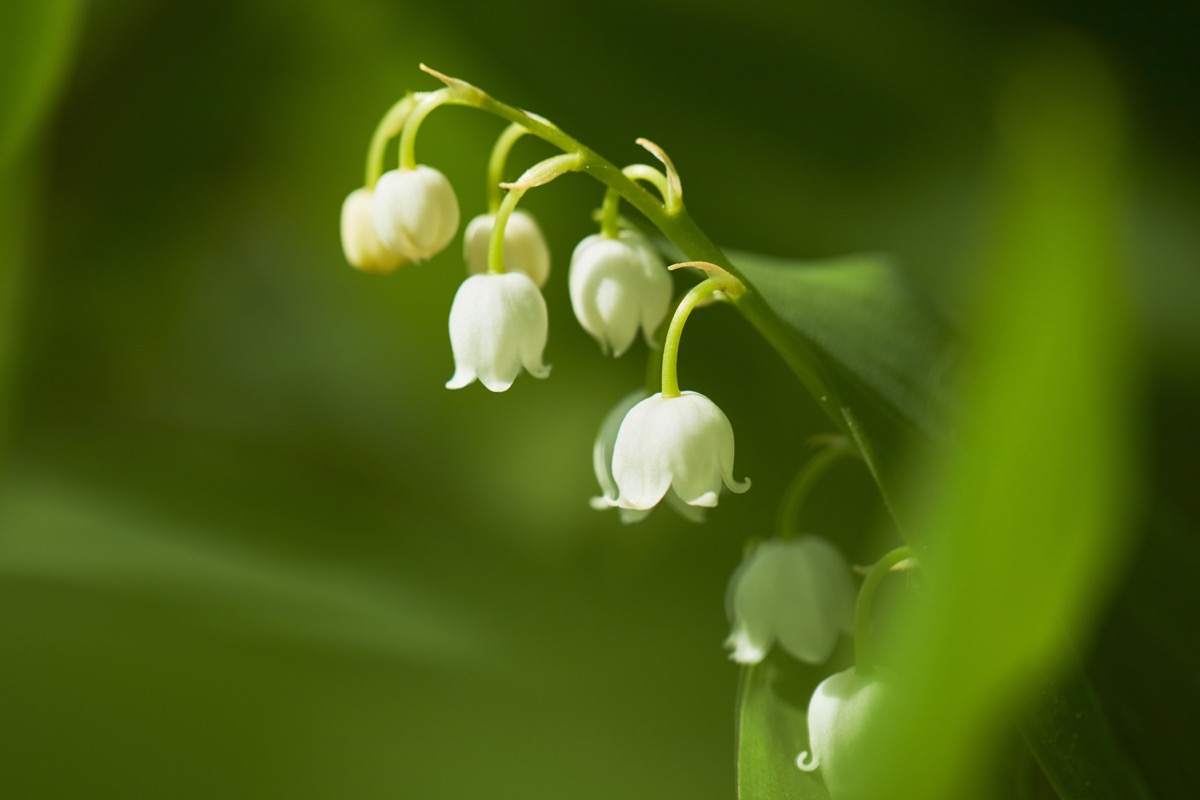
This popular flower may look sweet, but it can pose a serious health risk if it’s accidentally ingested.
“The consequences of ingesting the beautiful flower could be fatal, especially to children,” says Pol Bishop, a gardening and landscaping expert at Fantastic Gardeners. He notes that all parts of the plant, including its fruit, are poisonous.
“Some symptoms that occur after ingesting lily of the valley can include vomiting, abdominal pain, nausea, and problems with heartbeat,” adds Bishop, who recommends calling a poison control center if you have reason to believe the plant has been ingested by a member of your household.
4
Rhubarb
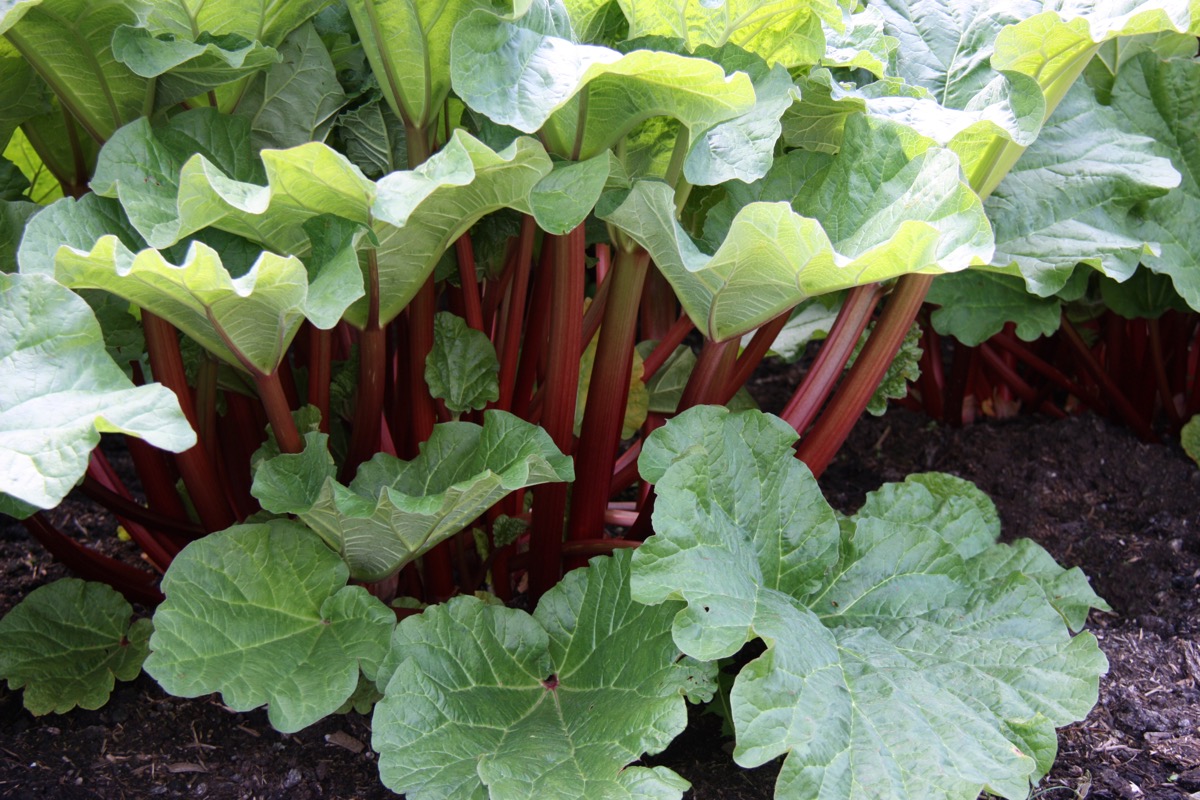
Its stalks are certainly a tasty addition to pies, jams, and other recipes. But rhubarb leaves, on the other hand, can be highly toxic to humans.
“The leaves of the culinary plant contain an acid known for forming calcium oxalate crystals….[which] can lead to irritation of skin, throat, mouth and tongue, and could lead to more serious problems, such as struggling to breathe, throat swelling, and burning,” says Bishop. In rare cases, excessive consumption of rhubarb leaves may even be fatal, according to an article published in the Journal of the American Medical Association.
RELATED: If You See This in Your Yard, Don’t Eat From Your Garden.
5
Foxglove
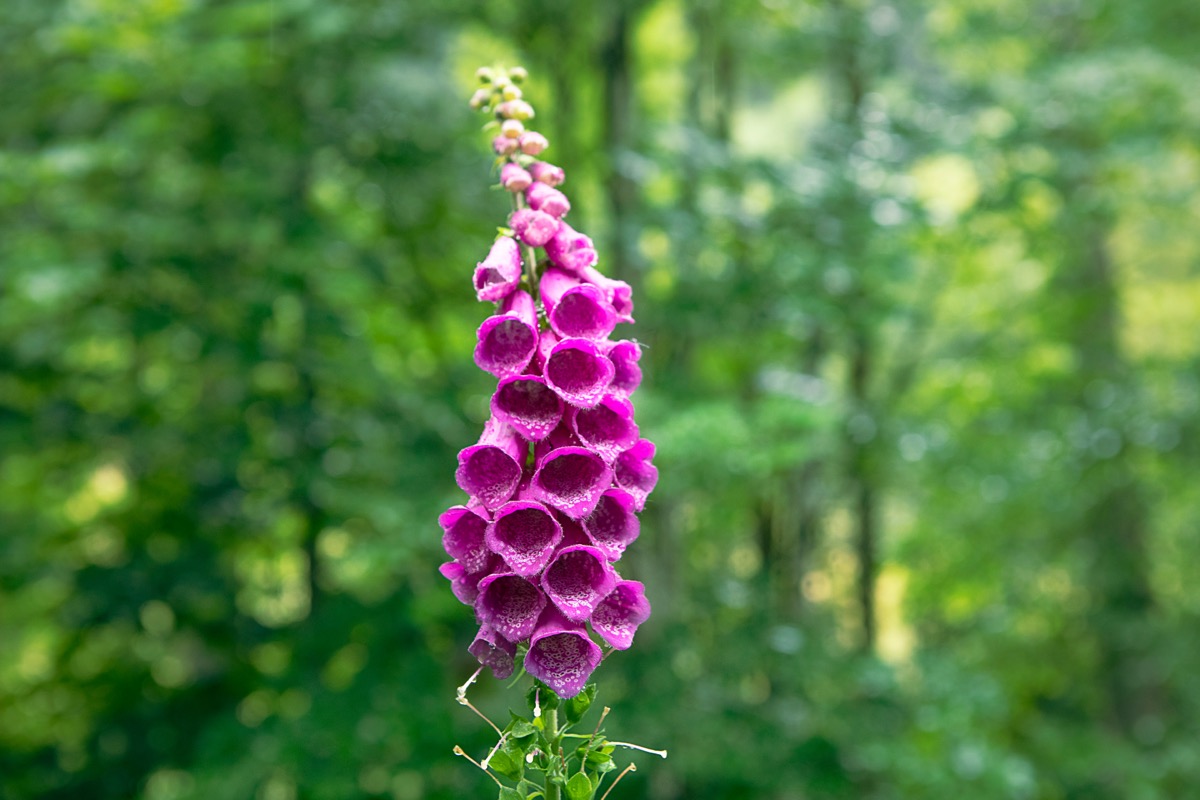
If you want to protect yourself and your loved ones, care for any foxglove on your property with extreme caution.
“All parts of the foxglove are extremely poisonous. The plant contains cardiac glycosides that can be severely toxic to humans,” says Bishop. “Ingesting the seeds, leaves, or the stems could lead to irregular or slow heartbeat, low blood pressure, rashes, and stomach pains.”
He says that anyone who ingests foxglove should seek immediate medical attention.
6
Daphne

Its colorful flowers and shiny leaves may make it an attractive addition to your garden, but daphne shrubs could pose a serious risk to your safety.
“Daphne’s berries and twigs are highly toxic,” says Bishop. “Direct encounter with fresh twigs of the plant can lead to serious rashes and eczema among people with sensitive skin.”
According to research published in the Canadian Journal of Plant Science, in addition to its “corrosive” sap, ingestion of any part of the daphne plant can be fatal to both humans and animals.
7
Pothos
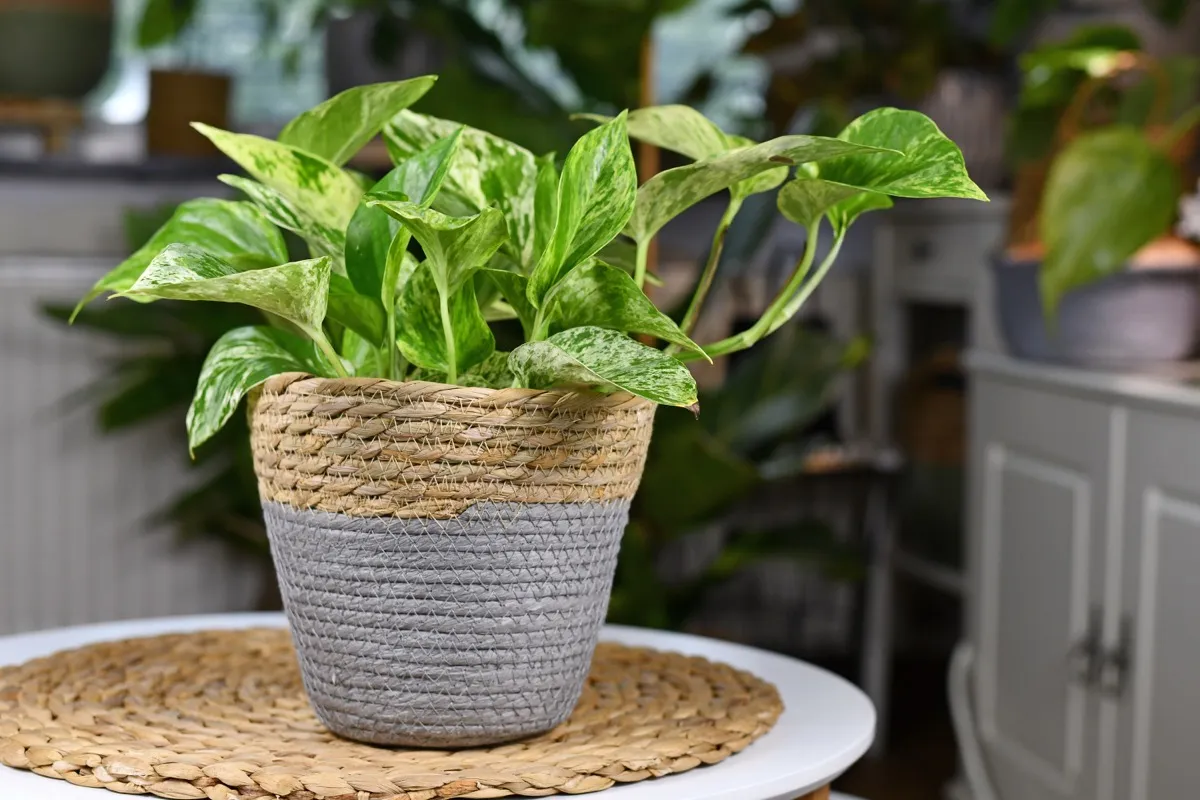
Easy to care for and vibrant, pothos plants are a fixture in countless households. Unfortunately, the popular plant may also pose a serious threat.
“All varieties of pothos contain calcium oxalate crystals that can cause burning and swelling in the mouth, along with gastrointestinal upset,” explains garden expert Erinn Witz, co-founder of Seeds and Spades. Since swelling in the mouth and respiratory tract can inhibit breathing, any person or animal who may have ingested the plant should seek immediate medical care.